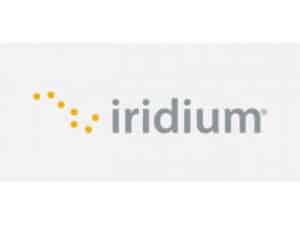
ABS releases offshore wind turbine guide
Written by Classification society ABS has released a Guide for Building and Classing Offshore Wind Turbine Installations. It is the first Guide to address design considerations for the bottom founded support structure of an offshore wind turbine situated in tropical storm prone areas on the U.S. Outer Continental Shelf (OCS) such as the Gulf of Mexico and East Coast.
Classification society ABS has released a Guide for Building and Classing Offshore Wind Turbine Installations. It is the first Guide to address design considerations for the bottom founded support structure of an offshore wind turbine situated in tropical storm prone areas on the U.S. Outer Continental Shelf (OCS) such as the Gulf of Mexico and East Coast.
Guides developed to date for such installations have been primarily based on experience from European coastal waters. The ABS guide is the first to specifically consider the conditions these structures may encounter in waters prone to tropical storms.
The guide takes into account the well-established International Electrotechnical Commission (IEC) 61400 series of standards for wind turbines, the American Petroleum Institute’s Recommended Practice for Planning, Designing and Constructing Fixed Offshore Platforms (API RP 2A), ABS’ offshore Rules and Guides and the unique environmental conditions on the U.S. OCS.
“The direct application of design criteria in existing standards, such as IEC 61400-3, is not sufficient for the offshore wind turbines in U.S. waters,” explains ABS Managing Principal Engineer, Qing Yu, the guide’s principal author. “We incorporate additional requirements based on calibration studies that use regional and site-specific conditions of U.S. waters.”
The guide incorporates refinements to the design environmental conditions and design load cases required by IEC 61400-3 to account for the effects of tropical hurricane conditions. Mr. Yu points out the principle of site-specific design are more directly addressed in the definition of the design load cases. “Omni-directional wind conditions are required for the design load case in the event an offshore wind turbine loses its connection to the electrical power grid during a tropical hurricane.”
The guide also specifies a unique set of strength design criteria for the steel support structure of an offshore wind turbine based on the commonly accepted working stress design (WSD) approach.
“Allowable stresses are defined for a variety of design conditions including normal, abnormal, transport and installation, as well as earthquake and other rare conditions,” says Mr. Yu. “In addition, equivalent load and resistance factor design (LRFD) criteria are defined as an alternative to the WSD-based criteria.
ABS offers a class notation for turbine support structures that comply with the requirements and conditions of the guide. The notation A1 Offshore Wind Turbine Installation will be listed in the ABS Record. Other optional class notations are S (years) for the return period of maximum design environmental conditions and FL (years) for the design fatigue life.
The guide includes the requirements for the survey during construction and installation and the survey after construction taking into consideration the uniqueness, such as serial fabrication and installation, of offshore wind turbines.
“With our decades of offshore experience we have a great existing body of knowledge and calibration studies in support of the design criteria specified in the Guide,” comments ABS Vice President of Offshore Technology Bret Montaruli.
December 28, 2010





Leave a Reply
You must be logged in to post a comment.